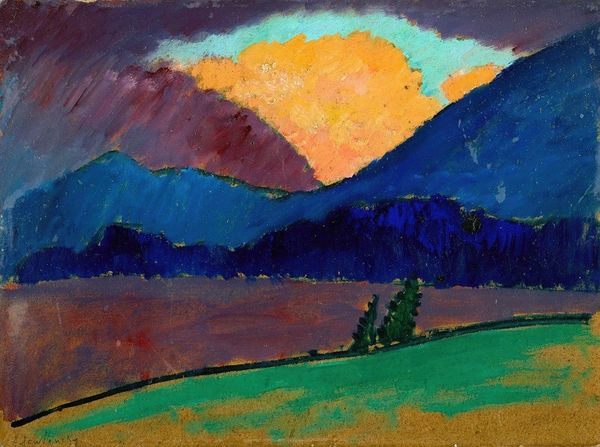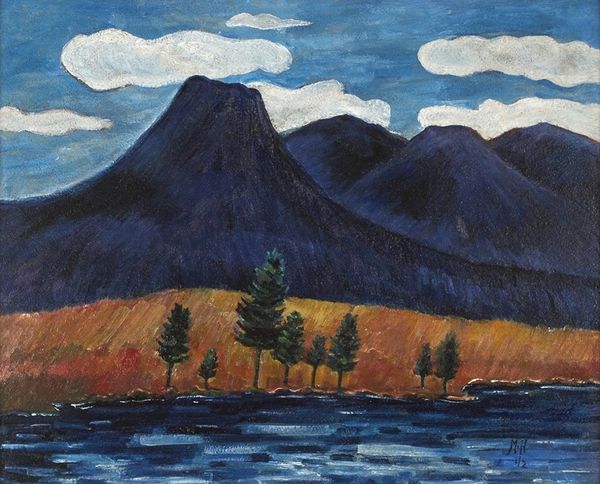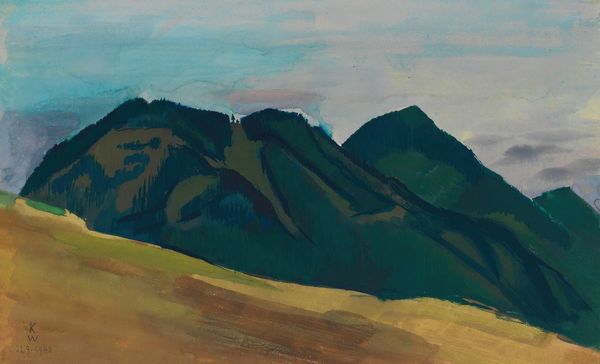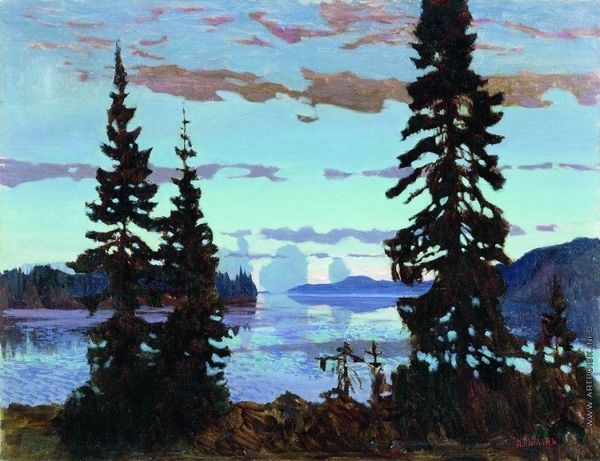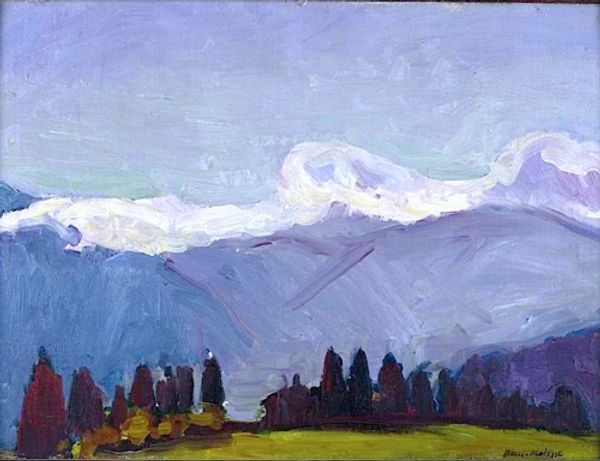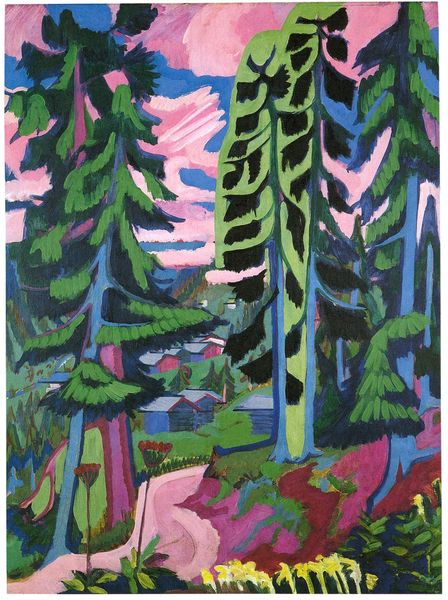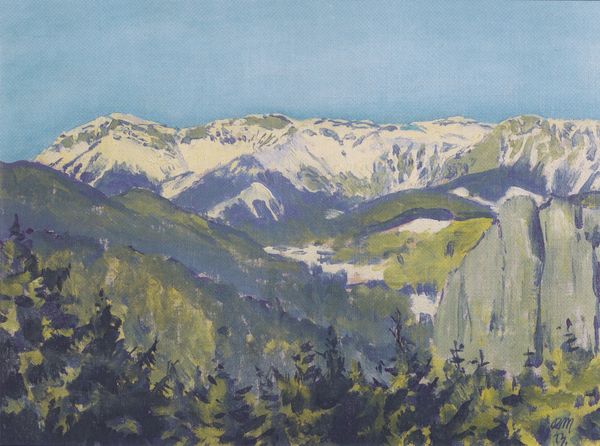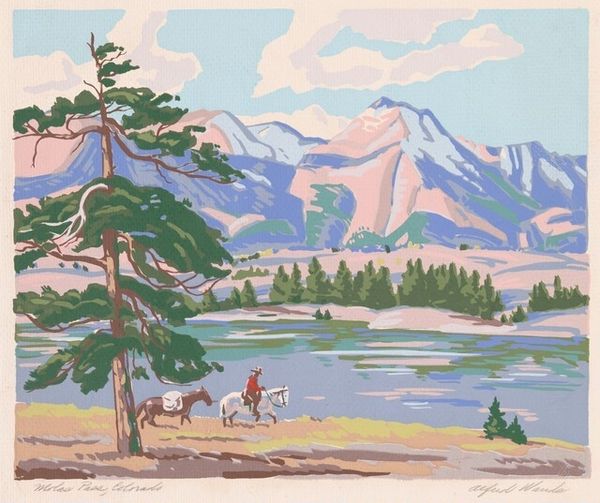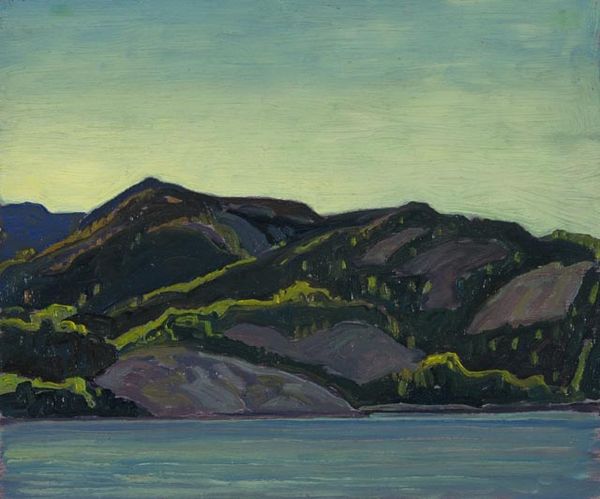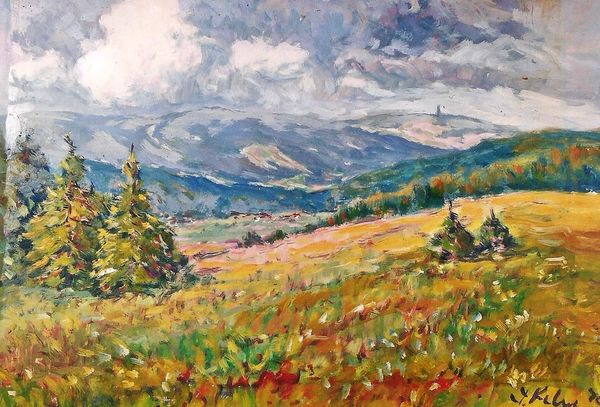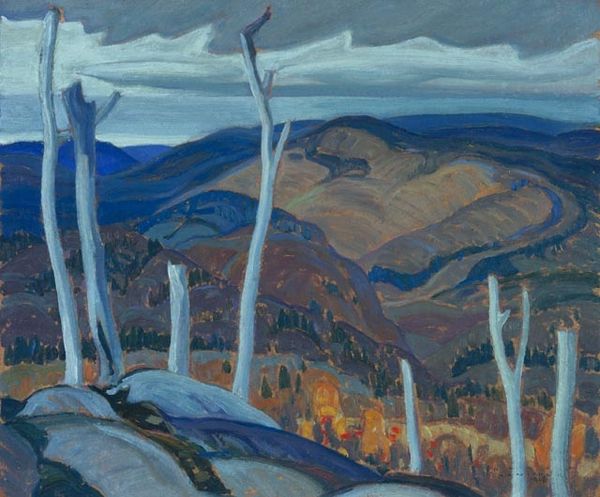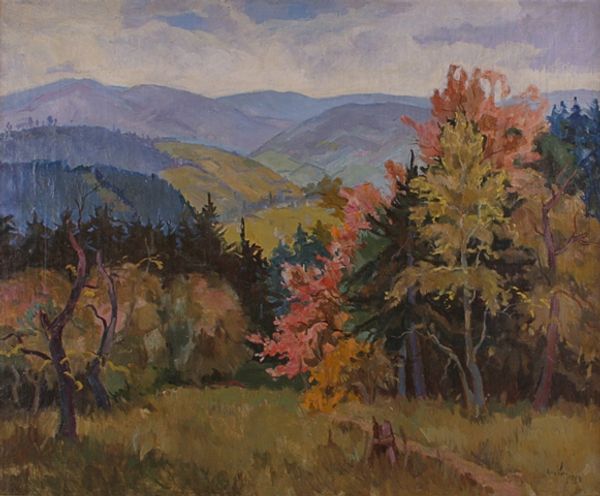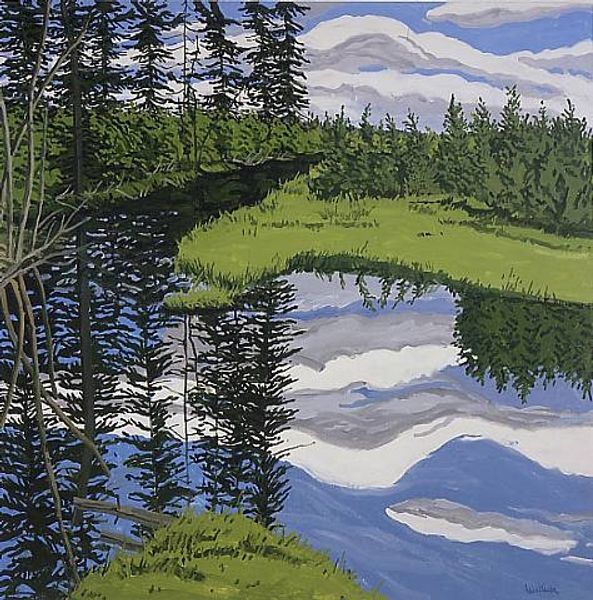
Copyright: Public Domain: Artvee
Editor: So this is "Landschaft III" by Karl Wiener, painted in 1943 using tempera. I find the color choices really interesting; the pinks and yellows in the sky create this really dreamlike quality. How do you interpret this work? Curator: The landscape itself is a powerful symbol. Landscapes are rarely just pretty pictures. Consider how, especially in 1943, the landscape could become a site of cultural memory, a reminder of home and heritage, especially potent during times of displacement or conflict. Do you notice the church spire, almost hidden? Editor: I do, now that you mention it! It almost blends in with the hillside. Curator: Churches have long been powerful symbols, offering solace, stability, and representing shared beliefs. Its diminutive scale here could signify a fading influence or a yearning for simpler times amidst upheaval. Consider the palette too, the way the artist deploys intense hues and blocks of color to construct a subjective reality rather than a literal depiction. Do these colors evoke any emotional responses in you? Editor: I guess it feels less like a specific place and more like a feeling, like longing? Curator: Precisely! The naive art style only heightens that dreamlike quality, transforming the painting into something timeless, resonating across different cultural memories. Its seeming simplicity hides layers of complex emotional and cultural significance. Editor: That’s fascinating. I never would have considered the historical context like that, about landscape as memory and symbol. Curator: Exactly. By understanding these visual symbols, we see how deeply intertwined history, culture, and personal emotions are, brought to life in this landscape.
Comments
No comments
Be the first to comment and join the conversation on the ultimate creative platform.
